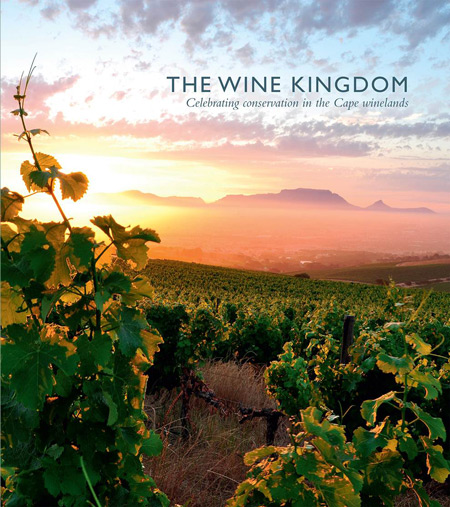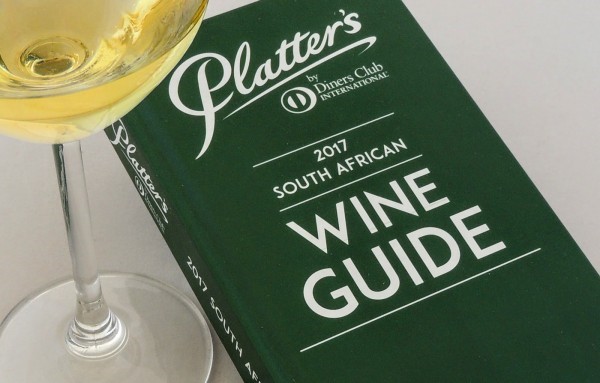Two wonderful book presents
The Wine Kingdom
The most amazing fact about this spectacular World Wildlife Fund publication is that it took just six months from conception to publication. In revealing that, I should declare my interest in The Wine Kingdom: I was kindly invited to write the introduction. But all the other reviews I’ve read or heard share my enthusiasm, so I hope no one deems my view unduly subjective.
This coffee-table book is offered as a celebration of 10 years of the Biodiversity and Wine Initiative, a collaboration between the South African wine industry and conservation sectors. In the early 2000s, it became clear vineyards were increasingly being established in the natural habitats of endangered indigenous vegetation in the Cape Floral Kingdom. This kingdom, covering 90 000 square kilometres, bears more than 9 000 plant species, over 70% of which are found nowhere else on earth.
BWI, with its two categories of members and champions, was founded in 2004 and initially developed with the help of the Botanical Society, Cape Nature, Wines of South Africa and the regulatory Wine and Spirit Board.
WWF came on board and took the project under its wing in 2008. The reader may learn the full background in my introduction – if he or she can bear to tear their eyes away from the almost 3-D full-colour photos; there has been no stinting in showcasing the breathtaking Cape scenery.
But the rest of the story is worth the read; a story that’s positive and encouraging. In ‘A River Runs Through It’, Myrna Robins traces the Breede River from source to Robertson, describing the conservation work carried out by the BWI Champion members en route. Many members have named wines after endangered species with suitably illustrated labels: Graham Beck’s The Game Reserve Chenin Blanc with its Riverine Rabbit (one of the world’s most endangered animals) is an example. Pages are given over to informing, with illustrations, of these.
Wineland walking trails, educating the next generation about conservation, sustainable/organic/biodynamic farming – all of these feature in their own chapters, with examples of member or champion farms. A comprehensive list of these latter two categories concludes the book.
This celebration of 10 years of BWI also marks the end of the present system. The former BWI Champions will henceforth be known as Conservation Champions, their status recognisable by the sugar bird on a protea sticker. The membership category will lapse. Hopefully the desire from all wine farmers to conserve and farm sustainably will continue and grow.
In the meantime, read what has been achieved since 2004 and be mesmerised by photographs of the glorious Cape.

The Wine Kingdom, published by WWF; 294 pages; R400
My Kind of Wine
The title of this, John Platter’s first book since he and Erica published Africa Uncorked in 2002, should immediately inform it is a subjective look (‘ramble’ as Platter describes it) at wines that appeal to his taste and imagination. His affinity with the people behind the wines, many of them long-time friends, others very new on the Cape wine scene, is evident. There are no pretensions to Platter’s selection being comprehensive across the stylistic range (no port-style wines are included and only one fortified) and Platter himself admits in his Author’s Notes: ‘I wouldn’t suggest the wines described here are the best in South Africa.’
Platter’s easy flow writing style traces his kind of wines in a varietal journey, starting with Cabernet Franc and working through to White Blends. We are given a little history and background, followed by the back stories of those producers whose wines particularly reflect Platter’s taste. By example, Chenin Blanc features winemakers Ken Forrester and his business partner Martin Meinert, and The FMC (Forrester-Meinert Chenin). ‘Our kind of wine,’ Platter concludes.
Others given similar space to discuss their philosophy, some techy stuff and Platter’s own reflections are David and Nadia Sadie, Chris Alheit, Gary and Kathy Jordan, Jacques de Klerk, Carl van der Merwe and Danie Steytler. A further two dozen receive vignettes under the heading ‘And’. So the journey proceeds throughout the book.
Bringing to life the people behind Platter’s main choices is photographer Clinton ‘The Eye’ Friedman (in the same idiom, there’s Editor Erica ‘The Chief Whip’ Platter and Palate John ‘A Drop More Please’ Platter). Wonderfully descriptive of character are the photographic sequences of Vergelegen’s André van Rensburg and Koen Roose of Spioenkop but few disappoint. Of course, the splendid Cape scenery also manages to squeeze its way onto many pages.
My Take On, a section I approached with much anticipation, promises Platter’s views on topics as diverse as Bush Vines, Old Vines, Dryland Vineyards and Sommeliers, Ice in Wine and… A little more actual opinion would have fulfilled my anticipation. Where Platter does let rip with unequivocal opinions is in his more lengthy ‘take’ on Wine Words, Tasting Notes. Basically, his objection is directed at the ‘jumble of often conflicting, always overlapping adjectives and comparisons’. I leave you to read the book to discover his preferred tasting notes. During the time I worked with John and Erica they frequently reminded me that verbs are much stronger than adjectives.
What would a Platter-authored book be without food? Whether food is the main subject, as in Erica’s Durban Curry, or this wine-focused tome, the other has to feature. To me this seems entirely logical and appropriate, though if any reader is somewhat taken aback, you are not alone – several friends have voiced surprise at the inclusion of Wine Country Food in a book that is primarily about wine but as Platter says in the section’s intro ‘wine and food are made for each other’. Many of the eclectic selection of recipes are those of featured producers or restaurateurs on wine farms, repeated as delivered to the editor: ‘Please do not expect a normal, standardised cookbook style here,’ Platter warns. Some more bookish friends have also thrown a bit of a hissy at the lack of a title page.
My own minor cavil is with The Advocates, an idiosyncratic pairing of ‘visionary’ viticulturist, Rosa Kruger and US critic, Robert Parker, the man who ‘swayed tastes and styles’, especially of Bordeaux reds. It’s not that each isn’t worthy of mention but somehow their pairing seems a little contrived.
With My Kind of Wine, the name Platter makes a welcome return to bookshelves. Whether readers are familiar with his writing or this serves as an introduction it is a delightful read, best enjoyed in small sips to make it last!

My Kind of Wine by John Platter, published by PawPaw; 224 pages; retailing at around R370
– Angela Lloyd
Declaration of interest: I worked with John and Erica Platter on the Platter Wine Guide from 1986 until they sold it. John has also kindly acknowledged my association with them in My Kind of Wine.